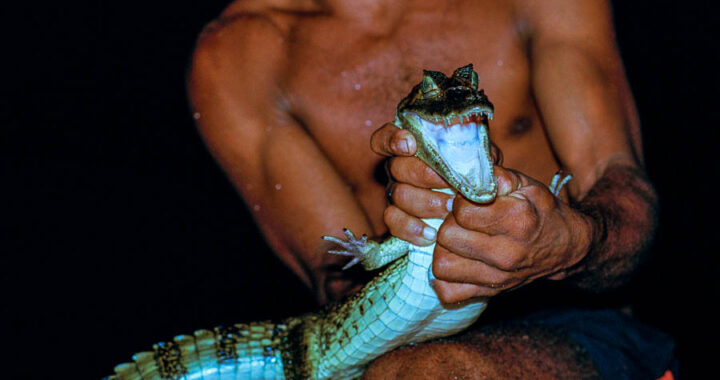This attitude can still be dismissed as a lack of responsibility, the result of poor education. It is sadder when an Amazon tourist guide says he is willing to shoot a jaguar for 50 thousand dollars.
Many Brazilians have little concern for the environment. Their lives revolve around money. And power. In the words of the guide: “If you want to make money, you have to give people what they want.”
Wildlife tourism: the uncomfortable truth
The proliferation of photos of tourists posing with captive wildlife on social media platforms such as Instagram is disturbing. With a simple tap, travelers share images of themselves with exotic animals, often without realizing the true conditions in which these animals live.
For example, tourists on the Rio Negro in Brazil eagerly snap photos with an Amazon river dolphin as it lunges for bait dangled by a tour operator. The dolphin’s skin is often covered in scratches from competing with other dolphins for the bait, but hands-on wildlife encounters are still a popular attraction in the region.
In another example, tourists pose with a sloth during a day trip near Manaus, Brazil. In many Amazon cities, sloths are illegally captured to be used as props for tourists. Sometimes tourists are offered for adoption a baby sloth that has supposedly fallen from a tree. Chances are the mother sloth has been killed. These animals require an average of 15 hours of sleep per day and do not respond well to handling. Many captured sloths die within weeks of being removed from their natural habitat.
It’s important for travelers and social media users to be aware of the reality behind these seemingly harmless animal encounters and consider the impact of their actions on these wild creatures.
Wildlife selfie trend
Wildlife tourism has been around for a while, but social media has brought it to the forefront, making encounters with exotic animals a popular trend for tourists looking for the perfect photo opportunity. While these activities used to be promoted in guidebooks, they are now instantly shared with a large audience through selfies and posts on social media platforms. Millennials, in particular, love to share their experiences with animals like dolphins, tigers and elephants on their feeds.
However, the glossy images on social media often obscure the reality of what goes on behind the scenes. Many of the animals in these attractions suffer in captivity, enduring abuse and exploitation for the sake of tourism. While social media may make these activities seem glamorous, it is important to remember that there is a darker side to wildlife tourism that is not always captured in the perfect selfie.
Research by World Animal Protection shows that sloths and other South American exotics are suffering daily from the growing trend of social media selfies with wild animals. These animals, including birds, anacondas, dolphins, caimans and giant anteaters, are being lured, captured and abused for selfies.
No more bear selfies or other close contact with monkeys
As of January 1, taking selfies or getting too close to bears and monkeys is against the law in Illinois. You can be fined or even jailed for harassing wild animals. The new law prohibits any physical contact or getting too close to the animals without a barrier. The law is intended to stop captive breeding and the use of wild animals for entertainment in places like roadside zoos. So no more selfies with bears or close encounters with monkeys in Illinois.
Source: National Geographic – Suffering unseen: The dark truth behind wildlife tourism


